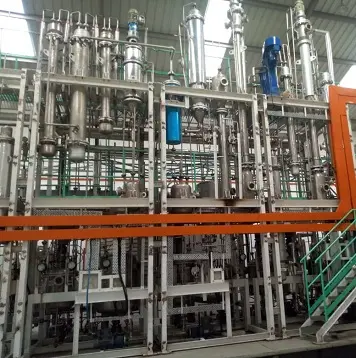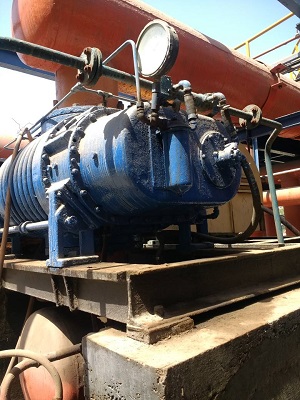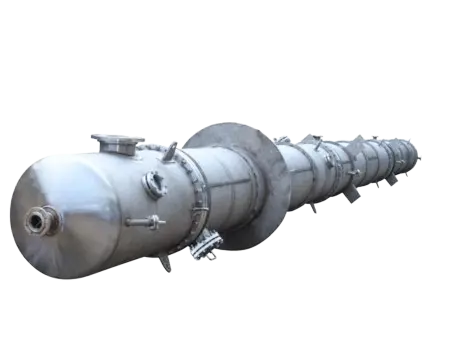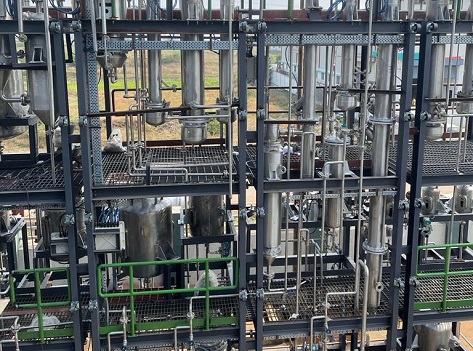Process Optimization with Distillation Columns
Distillation columns play a crucial role in separating mixtures into their individual components, making them an indispensable tool in industries such as oil and gas, chemical, pharmaceutical, food processing, and recycling. In this blog post, we will delve into the definition and significance of distillation columns, explore the diverse range of Economy Solutions’ distillation columns and services, discuss different types of distillation columns, optimization techniques, pilot plant design and automation, distillation column components and design, and the industries that benefit from this technology.
Definition of Distillation Columns and Their Importance in Various Industries
Distillation columns are tall vessels used to separate mixed liquids or gases based on the differences in boiling points of the components. The principle behind distillation is to heat the mixture, causing the components with lower boiling points to vaporize, rise in the column, and condense into a liquid. The separated components are then collected at different points along the column.
Distillation columns play a pivotal role in various industries. In the oil and gas sector, these columns are used to refine crude oil into its different fractions, such as gasoline, diesel, and jet fuel. In the chemical industry, distillation columns are employed to separate and purify different chemicals.
The pharmaceutical industry utilizes distillation columns to produce pure drug compounds. In the food processing industry, these columns help in extracting flavors and fragrances from natural sources. Distillation columns also play a critical role in recycling plants, separating and purifying various substances for reuse.
Economy Solutions is a renowned provider of distillation columns and services, offering expertise and a diverse range of offerings. With years of experience, they have become a trusted partner for industries worldwide. Economy Solutions provides customized distillation columns tailored to specific requirements. Their services include column installation, maintenance, and optimization to maximize efficiency and productivity.
Whether it’s designing a new distillation system or revamping an existing one, Economy Solutions is committed to delivering innovative solutions.
Types of Distillation Columns
1. Batch vs. Continuous Distillation:
Batch distillation involves separating mixtures in batches, while continuous distillation allows for a continuous separation process, making it more efficient for large-scale operations.
2. Fractional Distillation:
Fractional distillation is used when there are multiple components with close boiling points. This process involves the use of fractionating columns to achieve better separation.
3. Reactive Distillation:
Reactive distillation combines distillation and chemical reactions in a single unit, making it efficient for processes that involve reversible reactions. This integrated approach eliminates the need for separate reactors and simplifies the overall process.
4. Vacuum Distillation:
Vacuum distillation is employed when the boiling points of the components are too high. By reducing the pressure in the column, the boiling points are lowered, allowing for separation at lower temperatures.
5. Steam Distillation:
Steam distillation is used when distilling temperature-sensitive or heat-sensitive substances. By introducing steam, the boiling points of the components are reduced, aiding in their separation.
Optimization of Distillation Columns
To enhance the efficiency of distillation columns, various optimization techniques can be employed:
– Economic optimization aims to minimize costs while maximizing the desired product yield.
– Stochastic optimization utilizes statistical methods to optimize the distillation process under uncertain conditions.
– Equation-oriented optimization involves solving mathematical equations to optimize the system.
– Simulation-based optimization utilizes computer simulations to optimize the distillation process and identify the optimal operating conditions.
– Advanced process control techniques, such as model predictive control, can be implemented to optimize distillation column performance in real-time.
Pilot Plant Design and Automation
Pilot plants play a crucial role in testing and optimizing distillation processes before full-scale implementation. Economy Solutions offers full plant design and automation services to ensure the smooth transition from pilot plant to commercial production. Their expertise in designing pilot plants enables industries to validate the feasibility of new processes, optimize operating conditions, and minimize risks associated with scale-up.
Distillation Column Components and Design
Distillation columns consist of several key components:
– Bubble Cap Construction: Bubble caps promote the efficient contact between the vapor and liquid phases, enhancing separation efficiency.
– Tray and Packing Design: Trays and packing provide surfaces for vapor-liquid contact, allowing for the separation of components. Different tray and packing designs are used based on the specific separation requirements.
– Factors Influencing Column Design: Several factors, such as the desired separation efficiency, feed composition, temperature, pressure, and the properties of the components being separated, influence the design of distillation columns. The column diameter, height, feed location, and operating pressure are carefully optimized to achieve the desired performance.
Industries that Benefit from Distillation Columns
1. Oil and Gas Industries:
Distillation columns are instrumental in refining crude oil into various products, meeting the demands of the transportation industry, and providing essential petrochemical feedstocks.
2. Chemical and Pharmaceutical Industries:
Distillation columns are widely used in these industries to separate and purify chemicals, ensuring the production of high-quality products and pharmaceutical compounds.
3. Food Processing Industry:
Distillation columns aid in the extraction of flavors, fragrances, and essential oils from natural sources, enhancing the quality and variety of food products.
4. Recycling Plants:
Distillation columns play a critical role in recycling plants, separating and purifying waste streams for reuse, reducing environmental impact, and promoting sustainability.
Distillation columns are essential in various industries, enabling the separation and purification of mixtures.
Economy Solutions offers a diverse range of distillation columns and services, ensuring efficient and optimized processes.
By understanding different types of distillation columns, employing optimization techniques, designing pilot plants, and utilizing proper component and system design, industries can enhance productivity, reduce costs, and meet stringent quality standards.
Distillation columns are indeed a cornerstone of modern industrial processes, contributing to the growth and sustainability of various sectors.


























